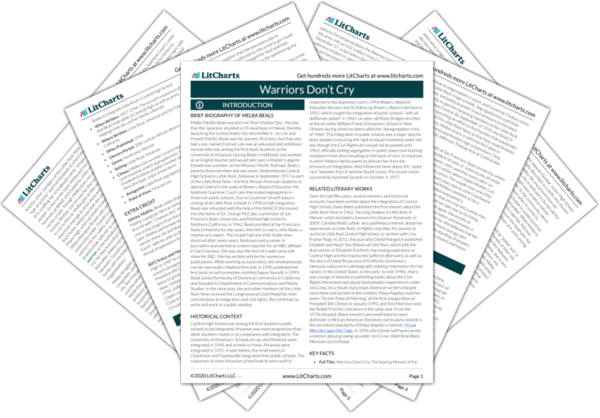An attorney for the and the chief attorney in the case. Marshall also served as the head of the NAACP Legal Defense and Education Fund. Shortly before attends Central High School, she and her family watch an announcer talk about Marshall on television. Marshall, in concert with the NAACP, ordered the Federal District Court to start integrating schools immediately. In 1967, President Lyndon Johnson appointed Marshall to the Supreme Court, where he served as the first black justice until 1991.
